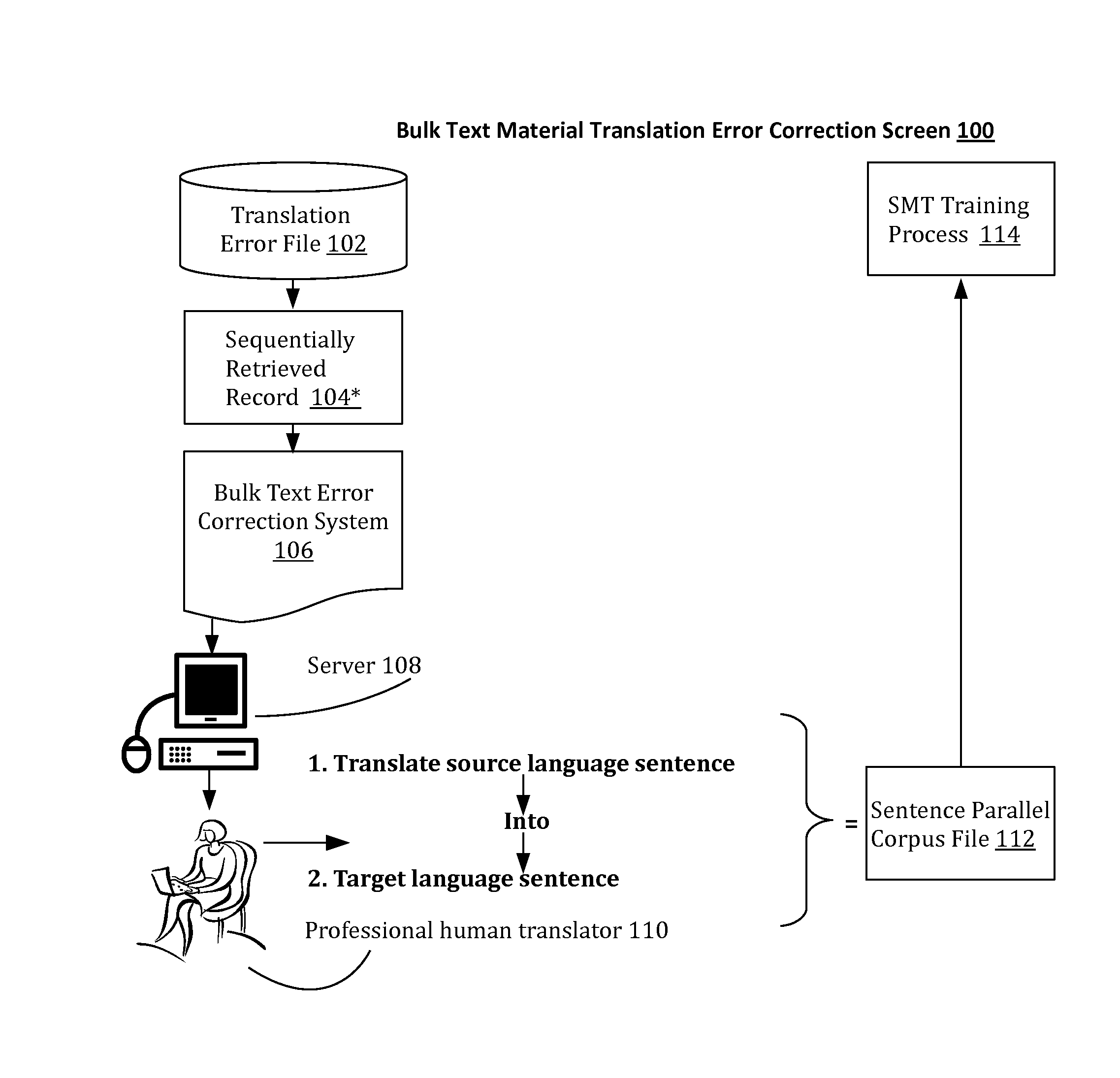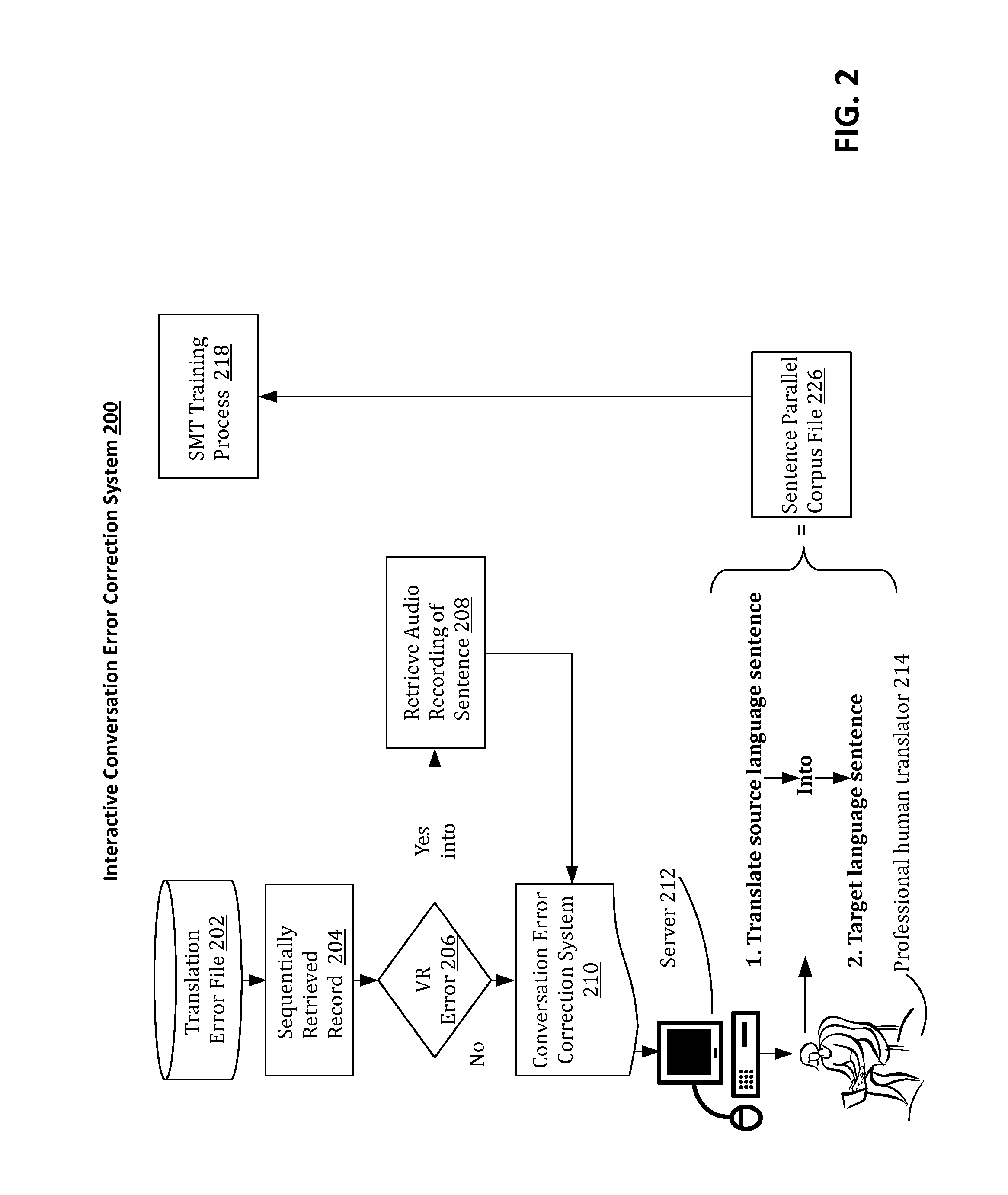Method for Increasing the Accuracy of Subject-Specific Statistical Machine Translation (SMT)
a statistical machine and subject-specific technology, applied in the field of statistical machine translation, can solve the problems of inability to provide professional human translations, inability to meet the needs of human translation, so as to improve the work of statistical machine translation (smt), improve the accuracy of statistical machine translation (smt) translation, and increase the effectiveness of the required ongoing human translation effor
- Summary
- Abstract
- Description
- Claims
- Application Information
AI Technical Summary
Benefits of technology
Problems solved by technology
Method used
Image
Examples
Embodiment Construction
[0074]Although various embodiments of the invention may have been motivated by various deficiencies with the prior art, which may be discussed or alluded to in one or more places in the specification, the embodiments of the invention do not necessarily address any of these deficiencies. In other words, different embodiments of the invention may address different deficiencies that may be discussed in the specification. Some embodiments may only partially address some deficiencies or just one deficiency that may be discussed in the specification, and some embodiments may not address any of these deficiencies.
[0075]In an embodiment there are three basic types of material that can be submitted for translation by SMT, as follows: (1)—Bulk text material consisting of prewritten material including of multiple sentences, often many pages consisting of multiple sentences, and (2)—Interactive conversational data, such as voice-to-voice translation of conversation participant's dialogue in rea...
PUM
 Login to View More
Login to View More Abstract
Description
Claims
Application Information
 Login to View More
Login to View More - R&D
- Intellectual Property
- Life Sciences
- Materials
- Tech Scout
- Unparalleled Data Quality
- Higher Quality Content
- 60% Fewer Hallucinations
Browse by: Latest US Patents, China's latest patents, Technical Efficacy Thesaurus, Application Domain, Technology Topic, Popular Technical Reports.
© 2025 PatSnap. All rights reserved.Legal|Privacy policy|Modern Slavery Act Transparency Statement|Sitemap|About US| Contact US: help@patsnap.com



